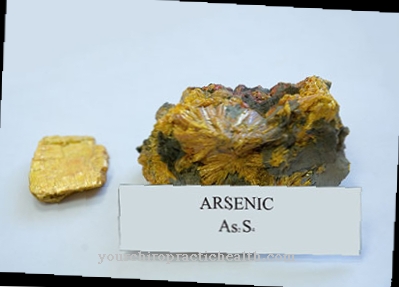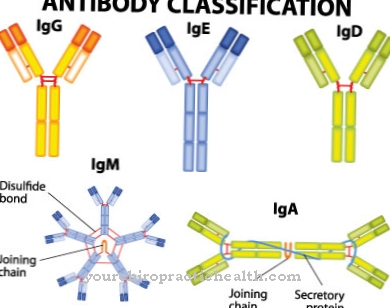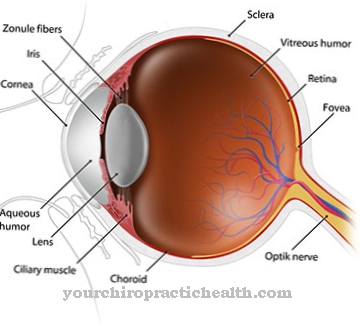Polio (poliomyelitis) is a highly contagious infectious disease. If left untreated, it can lead to death, as severe paralysis occurs that can attack the lungs and respiratory organs and render them inoperable. However, there is a vaccination against polio, so that this disease has only occurred very rarely in Germany since the 1960s.
What is polio?

© Kirill Gorlov - stock.adobe.com
The Polio (poliomyelitis) or simply polio is a highly contagious infectious disease that is transmitted by types I, II and III polioviruses. After an illness, paralysis can remain or even lead to death.
Usually the viral disease is always feverish. The paralysis is caused by the poliovirus-affected spinal cord, which controls the movements. In general, polio has become rare in industrialized countries since around 1960 and the introduction of preventive oral vaccination. The last disease in Germany that was caused by a wild virus was reported in 1990. However, vaccination coverage in society is decreasing more and more.
In more than 95 percent of the diseases, poliomyelitis goes unnoticed and without symptoms. In about one percent of the cases, the described paralysis or meningitis occurs, which can cause permanent damage.
causes
With Polio (poliomyelitis) one is infected by RNA viruses from the group of polioviruses. These are highly contagious and are transmitted fecal-orally. The infection is comparable to the transmission of hepatitis A, that is, one becomes infected by ingesting contaminated drinks or food. Infection through coughing, sneezing, or kissing, on the other hand, is rare.
The incubation period in polio is quite long, it can take three to 35 days for it to break out. The disease has two phases. After infection, the viruses multiply in the body and unspecific symptoms such as headache and body aches, loss of appetite, diarrhea, fever and difficulty swallowing occur.
After this first phase of the disease, there is a symptom-free interval and the viruses penetrate the central nervous system and thus trigger the second phase of the disease. Symptoms of this phase are then muscle pain in general, especially back pain, paralysis, increased sensitivity to stimuli and meningitis.
Symptoms, ailments & signs
Even if the poliomyelitis is largely under control in this country due to oral vaccination, many people still suffer from the long-term effects of early childhood polio. The early symptoms of polio can be non-specific and undramatic. Poliomyelitis only takes a severe course in a few infected people. The dangerous thing is that post-polio syndrome with considerable symptoms can still occur many years after the actual infection.
The symptoms of polio infection may be absent or lead to mild abortive poliomyelitis. The symptoms are mostly unspecific complaints such as high temperature, headache and body aches, loss of appetite, sore throat or diarrhea. Around five out of a hundred infected people even show such symptoms. Two forms of polio can occur in severely affected individuals: non-paralytic polio and classic paralytic polio.
The former leads to meningitis with fever, stiff neck, muscle and back pain and increased sensitivity to external stimuli. Classic polio leads to permanent symptoms of paralysis in the extremities. In addition, severe back pain and complaints of varying degrees of severity in the breathing, swallowing, speaking and eye muscles can occur. It can lead to fatal respiratory paralysis.
Course of disease

The Polio (poliomyelitis) can occur in three different disease courses. They differ in the type and intensity of the symptoms and, above all, whether the central nervous system is attacked or not.
With the low, so-called subclinical course, the signs of the disease are rather low. After six to nine days, the disease breaks out in the form of fever, nausea, headache and sore throat. Overall, it is milder and the central nervous system is not infected.
In the non-paralytic course (which occurs in around one percent of all polio-infected people), the person affected has fever, back pain, muscle pain and stiff neck. In this course of the disease the central nervous system is affected, but the course of the disease is milder than in the paralytic course.
In this case, the affected person suffers from paralysis, especially of the legs. This paralysis can persist even after the illness. Patients suffering from a form of the disease with paralysis die in two to 20 cases.
Complications
Complications of poliomyelitis are wide-ranging. With consistent physiotherapeutic treatment, symptoms of paralysis can regress completely up to two years after the acute phase. In spite of therapy, however, the muscles are often impaired. In some cases, the trunk muscles are affected by paralysis in addition to the leg muscles.
Over time, severe scoliosis of the spine develops as it is not adequately stabilized by the weak muscles. As a result, breathing can be significantly impaired. If there is no adequate therapy during convalescence, the malfunction of the affected muscles remains much more pronounced. The corresponding effects on the musculoskeletal system such as misalignments of the joints, circulatory disorders, osteoporosis, breathing and swallowing difficulties are more serious.
Paralyzed extremities often grow to a limited extent, which later leads to leg length differences, pelvic obliquity and scoliosis. Orthopedic aids such as crutches, splints and hand-operated wheelchairs put additional strain on healthy joints after many years of use. Furthermore, if you have suffered polio, you must take into account each subsequent general anesthetic.
The dosage must be adjusted accordingly in order to avoid problems waking up after anesthesia. The most common long-term consequence is post-poliomyelitis syndrome. Years or decades after suffering from illness, extreme tiredness and sudden onset of new paralysis can occur. Muscles that have not previously been affected can also become ill.
When should you go to the doctor?
A doctor is needed for symptoms such as paralysis, restricted mobility, joint discomfort and body aches. If the person can no longer move without assistance, this is a worrying condition. Asymmetrical paralysis of the limbs, in particular, is a sign of a serious illness. Since polio can lead to death in severe cases without medical care, a doctor should be consulted as soon as the first irregularities occur.
If there is a refusal to eat or drink, digestive tract complaints, diarrhea or nausea, a doctor should be consulted. In the case of headaches or a general feeling of pain throughout the body, examinations are necessary to clarify the cause. Back pain, changes in breathing, and increased irritability are warning signs that should be followed up. If you experience pauses in breathing or anxiety due to breathlessness, it is advisable to see a doctor. Consultation with a doctor is necessary as soon as persistent irregularities in the muscular system occur.
If there was no physical overexertion, this is considered unusual and should be examined. Consult a doctor if you have a fever, sore throat or stiff neck. If circulatory disorders occur, if there is a general feeling of illness or if chewing, swallowing or speech disorders occur, a doctor should be visited. Problems of the eye muscles or the heart rhythm should be presented to a doctor as soon as possible.
Treatment & Therapy
On the one hand, a Polio (poliomyelitis) diagnosed by the visible symptoms such as paralysis. However, it is also possible to detect the virus in feces, throat secretions or cerebral fluid. If the patient is in the first phase of polio, many febrile infections are possible because of the unspecific symptoms.
Even if paralysis has already occurred, there are other diseases that are similar to the course of polio. Only the symptoms of polio can be treated, i.e. the symptoms are alleviated with medication. Fighting the virus directly is not yet possible.
If polio is suspected, strict bed rest is usually required. Otherwise, physiotherapy is recommended and in the event of paralysis, the person concerned is alternately positioned to relax the muscles. A vaccination against polio is also possible.
Outlook & forecast
The prognosis for polio is usually favorable. This disease can heal spontaneously. These occur within a period of up to two years after infection. Nevertheless, medical care should always be sought for a good prognosis, as the disease is associated with complications for many people affected. Without treatment, the risk of serious disease progression increases. This can lead to a premature death of the person concerned. There is also the possibility that lifelong impairments and secondary diseases may occur.
With sufficient and comprehensive treatment, individual therapy methods are applied. These depend on the extent of the symptoms and the stage of the disease at the time the diagnosis was made and the start of treatment. In addition to the administration of medication, physiotherapeutic support is also used to alleviate the impairment of movement. In addition, possible long-term consequences of polio are limited in this way. Displacements of the spine or differences in limb lengths should be avoided.
An unfavorable course of the disease is given as soon as the cranial nerves of the person concerned are affected. In these cases the prognosis is to be classified as poor. Polio shows a significantly higher mortality rate in sick patients. Up to twenty percent of those affected die prematurely.
Aftercare
Polio is an infectious disease that is caused by polioviruses. In the technical language one speaks of poliomyelitis, or polio for short. This term is made up of the words "polio" and "myelitis", which together describe the inflammation of the spinal cord caused by the polioviruses. Although the term suggests that only children can get poliomyelitis, adults are also often affected.
In many cases, polio runs without symptoms, but it can also lead to severe, permanent paralysis of varying degrees. It becomes particularly dangerous when the viruses affect the respiratory function. In the past it happened very often that affected people were then placed in the so-called "iron lungs" in order to be able to breathe at all.
The polioviruses are transmitted through human contact, so it is a so-called contact infection. The original plan was to eradicate poliomyelitis completely by the 21st century, but this plan has not worked due to political, geographic and global implications. As a result of the African civil war, almost 200 new infections occurred in 2012, including in Nigeria, Afghanistan, Pakistan and Chad. However, there are still individual infections within the EU, such as in 2015 in Ukraine, where only about half of all children are vaccinated.
The only effective remedy against polio is preventive, blanket vaccination. In the past, this step was done by means of an oral vaccination, nowadays children are given a basic vaccination in the third month of life, which is boosted after ten years. If necessary, further vaccinations can be carried out later for persons at risk. The STIKO ("Standing Vaccination Commission") recommends a combination vaccination against polio (polio), tetanus (tetanus), diphtheria (infectious disease) and pertussis (whooping cough).
You can do that yourself
In the acute phase of polio, the bed rest prescribed by the doctor must be strictly observed. A muscle-relaxing position counteracts cramps in the muscles in the event of paralysis, and warm, moist compresses can relieve pain. Light physiotherapy under supervision is already useful at this stage and should be continued consistently after the illness.
Permanent paralysis or joint damage to the spine or extremities require an adaptation of everyday life to the changed circumstances. Many restrictions on movement can be compensated for by aids such as walking rails, walkers or wheelchairs, and a barrier-free living space makes it easier to maintain normal daily routines. In many cases, it is also possible to continue working. It is important not to overwhelm the body and to pay attention to its signals. Sufficient sleep and regular rest breaks ensure the necessary recovery, unnecessary stress and excessive physical exertion should be avoided.
Post-polio syndrome, in particular, tends to get worse under stress. The exploration of your own limits must therefore be done extremely carefully. Psychologically, the illness is better processed if restrictions are not viewed as weaknesses but are accepted as given. For many sick people it is helpful to exchange ideas with other sufferers in a self-help group or to talk to a psychotherapist.


.jpg)










.jpg)

.jpg)
.jpg)











.jpg)